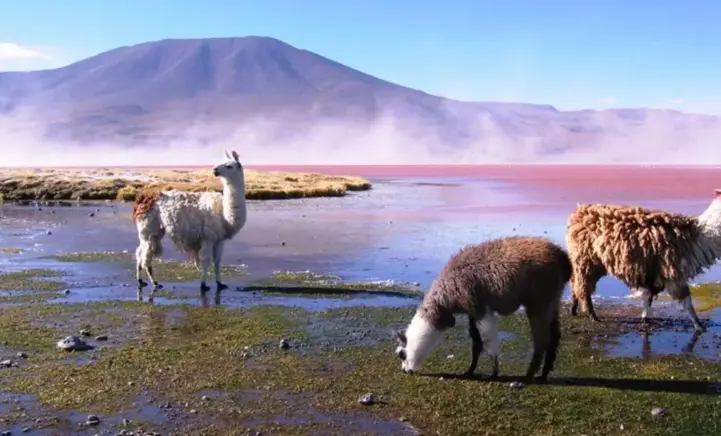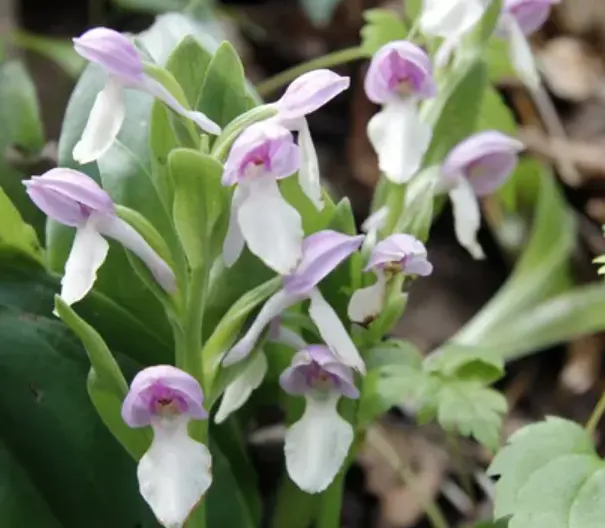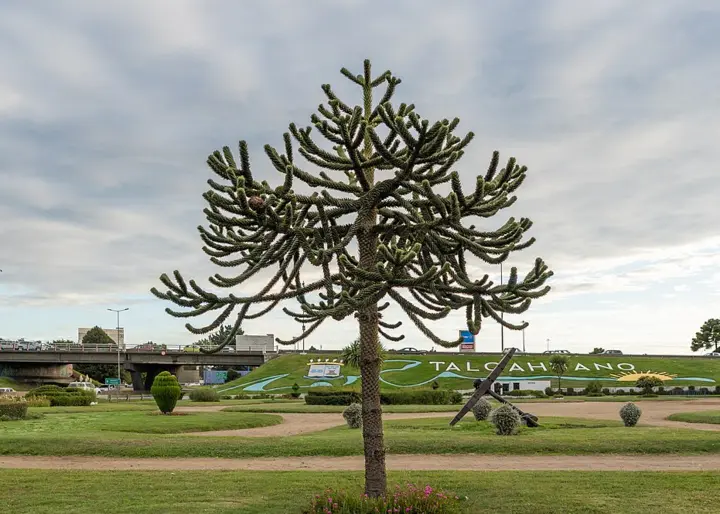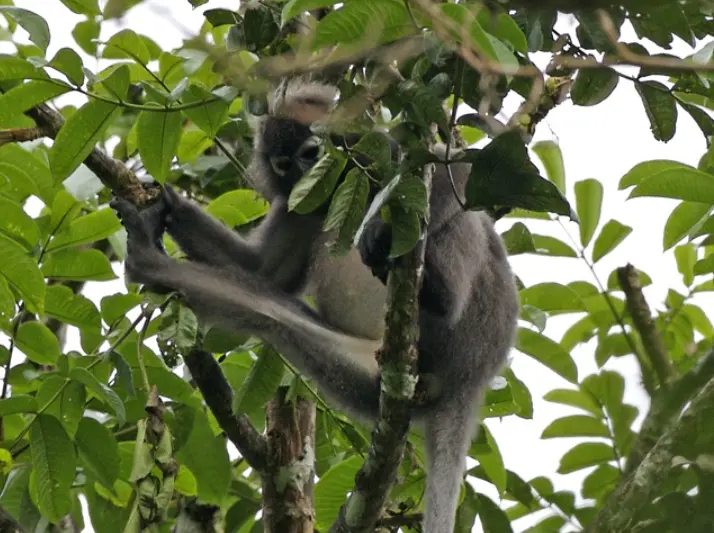The botanical marvel of the Andean ecosystem at high altitudes

The Andes in South America are one of the most important ecosystems in the world, characterized by their towering mountainous terrain and harsh climate. In this unique ecosystem, we witness an incredible botanical marvel, where the most unusual and rare plants on earth grow. This is considered the natural habitat of countless unique plant genera that have been able to adapt to harsh conditions and mountain heights. In this article, we'll explore some of the most unusual and rare plants in the Andes and learn about the challenges they face in the high ecosystem.
Show key points
- Plants in the Andes have developed extraordinary adaptations, including tolerance to freezing temperatures, low oxygen, and nutrient-poor soils, enabling them to survive in extreme high-altitude conditions.
- Rare fleshy plants in the Andes, such as Saracinia and Pencentia, have evolved insect-trapping mechanisms that not only sustain their nutrition but also add unique beauty to the ecosystem.
- Exotic orchids from the highest parts of the Andes thrive despite harsh weather, displaying vibrant colors and intricate forms, while supporting essential pollination networks with insects.
- ADVERTISEMENT
- The Andes host some of the world’s most unusual plant species, such as the spherical palma, giant vernie, and patato, each celebrated for their rarity, medicinal value, or symbolic significance.
- These rare Andean plants face severe threats from habitat destruction, illegal harvesting, climate change, and black-market trade, all of which endanger their survival.
- Protecting the Andes is vital not only for preserving its unique biodiversity but also for maintaining global climate regulation and supporting essential water resources.
- Raising awareness and fostering collaborative conservation efforts among governments, communities, and environmental organizations is crucial to ensuring the long-term survival of the Andes' extraordinary plant life.
1. Adaptation of plants to high mountain heights.

The Andean mountain system is characterized by its high altitudes and difficult mountainous terrain, making it an exceptional environment for plants with amazing adaptive abilities. Watching these plants withstand the harsh challenges they face amaze and impress many. So how can plants survive in conditions of high altitudes and be able to grow and thrive in these harsh conditions?
Recommend
The ability of plants to adapt to high mountain heights is the result of a long process of evolution that has lasted through the ages. Plants have learned how to adapt to lack of oxygen, low atmospheric pressure and severe climatic changes. It was able to evolve and adapt to withstand the bitter cold, strong winds and scorching solar rays.
The plants of the Andes are characterized by their unique ability to withstand temperature drops, as some of them can grow in very cold conditions such as freezing and the presence of ice. Also, some plants are able to withstand low atmospheric pressure at high altitudes, where it is difficult for other organisms to live in those conditions.
The adaptation of plants in the Andes includes not only physical aspects, but also adaptation to nutrient-poor soils. Some plants have evolved to be able to rely on certain microbes found in the roots to convert organic and mineral matter and secure their nutrition.
The ability of plants to adapt to the towering mountain heights of the Andes is truly a wonder of nature. It reminds us of the power of life and its ability to adapt and withstand in harsh environments. If we can contemplate the greatness and dedication of plants, we may realize that we have the strength and ability to adapt to any challenge we face in our lives.
2. Rare fleshy plants of the Andes.

Fleshy plants are among the most unusual and surprising organisms in the plant world. Although they are found in limited areas around the world, their presence in the Andes gives a special appeal to that imaginative view of nature. Its peculiar shape and ability to hunt insects for their nutritional needs is what makes it unique.
Fleshy plants may be small in size, but they carry beautiful and surprising details. It is characterized by its modified leaves for catching insects, as it has special structures that allow it to hunt and digest. Its leaves may contain different types of sticky glands, bristles, and water cups that attract and captivate insects. When an insect falls into its trap, plants use their unique digestive mechanisms to absorb and utilize nutrients.
Among the rare species of fleshy plants found in the Andes are Saracinia and Pencentia. Each species has a unique dual-purpose method, acting as beautiful plants and unique in terms of visual beauty as well as an insect catching mechanism. These enormous mechanisms help them adapt to the harsh environmental conditions of the high area of the Andes.
Rare fleshy plants of the Andes are of interest to botanists and nature lovers alike. They are vivid examples of the amazing adaptation that nature offers through its unique shape and mechanisms. In addition, these plants have an irresistible aesthetic radiance, their bright colors and unique shapes give us amazing spiritual moments and the enjoyment of the eye and heart.
But despite their beauty and survival, these plants face challenges and threats. The harsh environment of the Andes and massive climate change are among the main challenges it faces. Fleshy plants require special conditions for growth and flowering, including an adequate level of humidity, lighting, and proper nutrition. Given the impact of climate change, degradation in environmental conditions could lead to a decline in the population of these rare plants and their loss forever.
3. Unique orchid plants in the upper Andes.

High in the Andes there is a special species of plant, the unique orchids, which are truly a marvel in the plant world. Orchids are known as one of the largest plant families in the world, with potentially around 30,000 species. Among this enormous diversity, some species bloom high in the Andes, making them impressive and surprising.
Orchids are an integral part of the mountain environment of the Andes, growing and growing alongside rivers, waterfalls and streams. These plants are distinguished by their bright colors and exotic shapes, making them one of the main targets for photographers and nature lovers alike. What is remarkable is the orchid's ability to adapt to extreme conditions at these high altitudes, where it faces low temperatures, fresh air and lack of oxygen. This plant possesses remarkable adaptation mechanisms that make it able to continue to grow and bloom.
Regardless of its great diversity, orchids require a certain environment to be able to grow. Due to the conditions of the Andes, this environment is abundant in this region, which means that the orchid acquires a unique and distinctive character in this mountainous terrain. The shapes and colors of orchids in the Andes vary from bright yellow to light pink and from sky blue to deep purple, giving a painting in this magnificent natural setting.
Orchids in the Andes are a haven for many pollinating insects, as they attract these insects with their beautiful appearance and pleasant smell. These plants and insects cooperate in achieving cross-reproduction, with orchids getting the necessary pollination from insects, while insects get food and shelter in return. These exciting biological interactions enhance the balance of the Andes ecosystem and maintain its sustainability.
4. The most unusual plants of the Andes.

The flora of the Andes is an amazing collection of living creatures, unlike anything else on earth. It is distinguished by its strange shapes and dazzling colors, which makes it a source of admiration and amazement for everyone who sees it. Here are some of the most unusual plants in the Andes:
First, the patato: this exotic plant is just like a familiar potato, but it is distinguished by its attractive colors and unique beauty. It is believed to have impressed human beings centuries ago, as the indigenous people of the Andes used it in their religious and medical rituals.
Second, flamenco: This unique plant grows in the flat lands of the Andes, and is characterized by its long, curved leaves that resemble flamenco feathers. A symbol of beauty and tenderness, this plant is an inspiration for artists and designers.
Third, spherical palma: This spherical plant is one of the rarest plants in the world. It grows in the high areas of the Andes, and is characterized by its peculiar spherical shape and the different types of flowers that grow in it. It is believed that this plant carries healing powers and the ability to promote positive energy.
Fourth, Andean pheasants: Andean pheasants are one of the amazing and exotic plants that grow in the Andes. It is distinguished by its long, colorful leaves and attractive flowers. It is believed that it has healing properties and is used in alternative medicine to treat many diseases.
Fifth, the giant vernie: The giant vernie is one of the most impressive plants in the Andes, with its huge size and large leaves. This plant can reach a height of more than 10 feet, and is believed to carry magical powers and is used in sorcery and spiritual rituals.
Sixth, the Andean orchid: The Andean orchid is one of the most beautiful plants in the Andes, and is characterized by its attractive flowers that vary in colors and shapes. A symbol of beauty and elegance, this plant is believed to carry a charming spirit.
The flora of the Andes are living masterpieces, highlighting the beauty of nature and the ability of life to adapt and survive in difficult conditions. If you want to see the exoticism and beauty that these plants have to offer, visiting the Andes is an unforgettable experience.
5. Threats of disappearance faced by these rare plants.

The Andes are home to a unique ecosystem, made up of many rare and exotic plants. But despite their beauty and diversity, these plants face significant challenges and threats to their survival in this fragile ecosystem. Silence surrounds these wonderful and beautiful botanical stories, and behind each rare plant lies a danger that can lead to its disappearance forever. Let's discover together the most important threats facing these rare plants, and how we can protect them from extinction.
First, the destruction of natural habitats:
Rare plants live in sensitive and destruction-prone environments and need certain natural habitats for growth and reproduction. With climate change and human interventions in the Andes, environmental degradation is beyond the adaptive capacity of these plants, leading to their loss.
Second, illegal harvesting:
The illegal picking of rare plants is one of the biggest threats they face. Some of these plants believe they have unique medicinal properties, which is why some people pick them up illegally for personal benefit. This leads to a shortage of individuals and their poor presence in nature.
Third, climate change:
With climate change, rare plants in the Andes are facing new challenges and threats. Increased temperature and excessive weather variability affect the mountain ecosystem, making some plants unable to adapt and stop growing and spreading.
Fourth, Illicit Trade:
The illegal trade of rare plants is a major threat to the sustainability of these plants. Some of them become popular and sought-after on the black market, where they are sold at high prices as luxury products. This leads to increased demand and excessive extraction that threatens their sustainability.
Fifth, lack of natural resources:
Rare plants in the Andes depend on the natural resources available to them, such as water and fertile soil. With water pollution and human-induced soil quality deteriorating, these plants are affected by a lack of resources essential for their growth and development, which negatively affects their continuity in nature.
In the end, the threats of disappearance and extinction facing rare plants in the Andes sound like a voice that has not yet been heard. The protection of these unique species requires joint efforts from governments, environmental organizations and the local community. Let us all unite in spreading awareness and protecting these rare plant treasures, so that they do not disappear silently and remain engraved in our hearts and in the Andes for future generations.
6. The importance of protecting the Andes as a unique ecosystem.

The Andes are one of the most important ecosystems in the world, with enormous biodiversity and unique and rare plant species. Given the challenges and threats facing the region, its protection is essential.
The Andes play a crucial role in providing water and natural resources to the surrounding areas, emitting water from rivers and springs that irrigate valleys, valleys and agricultural fields. In addition, this area is an important source of biodiversity and vital habitats, where many endangered animals and plants live.
In addition, the Andes play a crucial role in regulating the planet's climate, influencing climate patterns and contributing to the regulation of air flows and rainfall. Thus, any change in this region could affect the global climate and cause negative environmental repercussions.
Moreover, the Andes are home to many rare and endangered plants and species. The protection of these plants is not just an environmental duty, it is a civilized necessity. Every extinct plant is a loss of biological and cognitive wealth, a loss of the opportunity to study the adaptation and evolution of living organisms under harsh conditions.
Therefore, the international community, governments and environmental organizations must put the protection of the Andes and their biodiversity at the top of their agenda. Efforts to protect nature reserves should be strengthened and protection zones for endangered flora and fauna should be established. Public awareness of the importance of this area and the need to protect it must also be raised.
If the Andes are properly protected and cared for, we will protect not only the diversity of rare flora and fauna, but also the balance of nature and the regulation of the global climate. When we protect the Andes, we protect the future of the planet and future generations.

In the midst of the multiple environmental challenges and threats facing ecosystems around the world, we must take into account the Andes and their exotic and rare vegetation. This unique ecosystem provides a vital environment for diverse organisms, including plants that are a true marvel. By preserving these plants and protecting the Andes, we ensure the continuity of this unique ecosystem and the preservation of the diversity of the world's plant life.
![]()
Can companies avoid Kodak's future fate?
Can Companies Evade the "Kodak" Destiny in The Future? more- ADVERTISEMENT
![]()
Best Graphic YouTube Design Learning Channels in Arabic
Noor Design Channel stands out by teaching design basics like color theory in a hands-on way, helping many Arabs become skilled designers. It also guides learners on turning design skills into freelance work, making it a top pick for Arabic-speaking beginners. more- ADVERTISEMENT
![]()
Al-Ayjah Lighthouse and Castle in the city of Sur in the Sultanate of Oman
With its stunning coastal views and iconic Al-Ayjah Lighthouse, Tyre—also known as Sur—stands as one of Oman’s oldest and most captivating cities. Rich in maritime history, this ancient port once welcomed over 150 ships daily, bridging trade between continents and continuing to shine through its timeless heritage. more- ADVERTISEMENT
![]()
3 rarer stones than diamonds
Diamonds are prized for their beauty, hardness, and rarity, but some gemstones are even rarer. Tanzanite, found only in Tanzania near Mount Kilimanjaro, is highly valued for its deep purple-blue hue and tough mining conditions. Burmese ruby and Sri Lankan sapphire also stand out for their unique color and scarcity. more- ADVERTISEMENT
![]()
The Science Behind the Fireworks: Detecting Magic in the Sky
Fireworks light up the sky with magic, but behind the scenes, it’s all science—from chemistry creating dazzling colors to physics shaping every explosion. With modern tech, they’re safer and even eco-friendlier, blending beauty and brains for unforgettable shows that wow us while caring for the planet. more- ADVERTISEMENT
![]()
What is deepfakes? And is it possible to know it?
What is deepfakes? And is it possible to know it? more- ADVERTISEMENT
![]()
NASA rover discovery points to ancient microbial life on Mars
NASA's Perseverance rover is uncovering exciting clues that Mars may have once supported microbial life, especially with organic molecules found in rocks like "Cheyava Falls." Landing in the ancient Jezero Crater lakebed, its mission opens doors to deeper space exploration and the search for life beyond Earth. more- ADVERTISEMENT
![]()
5 ways to change your mindset today
Only 8% of people actually reach their goals, and what sets them apart is their powerful mindset. Instead of chasing new skills, start by flipping negative thoughts and setting small, achievable goals. Massive change begins with consistent tiny steps—and yes, you can train your mind for success. more- ADVERTISEMENT
![]()
Empires that changed the world
The Persian Empire ruled nearly half the world’s population, setting the gold standard for future empires. The Romans blended conquest with culture, inspiring modern democracy. The Mongols, though few, built the largest land empire through sheer mobility. The British shaped today’s world through trade, law, and global influence. more- ADVERTISEMENT
![]()
The Hundred Years War: A Comprehensive Overview
The Hundred Years' War reshaped England and France through fierce battles, bold claims to thrones, and shifting power. From iconic victories like Agincourt to Joan of Arc’s rise, this long conflict helped forge national identities and modern warfare, leaving a lasting mark on European history. more- ADVERTISEMENT





















